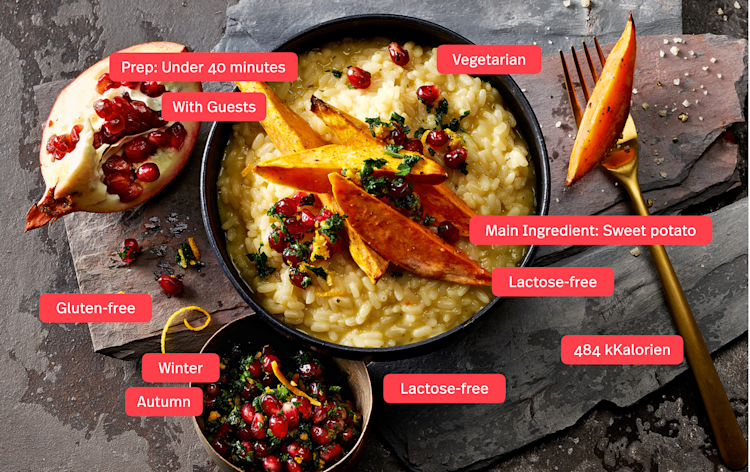Article
Why Content Needs Structure

The most underrated factor of success for content platforms: structured content. I experienced my eureka moment during a lively pre-Christmas discussion with the Swiss TV-Cook Annemarie Wildeisen.
We were right in the middle of a relaunch of the most successful cooking platform in Switzerland, the country of gourmets. The first workshop had been productive. We’d worked out the users and their needs. And now we were about to get down to the nitty-gritty: structuring the content.
It came down to a heated debate and the final question:
“Is Christmas a season?”
“Nope, not really.”
“But it sort of is!”
“Why not, if Carnival can be the fifth season?”
The truth is, even in beautiful Switzerland, there are only four seasons. And Christmas isn’t one of them. It is an occasion, like “picnic”, “home-cooked meal” or “barbecue”. Separating out season and occasion helped us provide additional categories to help users find relevant content on the platform. For example, we could suggest more recipes which were well-suited to the same occasion. Altogether we defined around 60 potential attributes and categories for each of the 6000 original recipes, including season, main ingredient, national cuisine, preparation time and course. Sounds like a lot of work? It was! But we had three very good reasons for it:
1. Building blocks for content strategy
A good content structure is a crucial building block of your content strategy and helps the editorial team to focus. You shouldn’t only consider the obvious categories, like topics, locations, and people; but also things like atmosphere, tonality, or user scenarios. Everyone will benefit from this in the end, when it comes to contextualizing the content.
2. Basis for API-first
When working API-first, great content structure is the basis for any kind of suggestions or recommendations, and when providing content to other distribution channels. You want to show the latest 5 springtime desserts without sugar, with a preparation time of under 20 minutes in your next newsletter or in a fitness app? No problem!
3. Foundation for personalization
An excellent content structure is a necessity for personalization. What’s the point, when the algorithm knows, in what specific context the user is at the moment, but is not able to suggest the fitting content? This only works if the content is well structured.
On the topic of personalization: We all structure all kinds of content in our everyday life, sometimes even without noticing it. We use hashtags on Instagram, to garnish our favorite meals. We tag the friends joining our dinner in facebook posts categorized in moods. We do all of this more or less without thinking, to put our posts into a context and make them more visible. To keep it short: Our structuring fosters discovery by other users.
Back to business: content structure also plays a major role in other media and platforms. The more personalized and contextualized a content experience is, the more important it is to readers.
Two examples: With our relaunch of ZEIT online, keywords became one of the most important entry points for users because they want to see at a glance every article on a topic they are interested in, for example, the formation of a new government in Germany. For a global image campaign for Red Bull, we set the goal to provide users content in a personalized stream with the latest videos of his/her favorite sport in his/her language and with the upcoming events in the country.
Christmas is around the corner and www.wildeisen.ch is in full swing. Especially nice: After the relaunch, the cooking platform grew their audience and visits by double digits. All thanks in part to intensive content structuring.
Originally posted on W&V (in German) and Frankwatching (in Dutch)